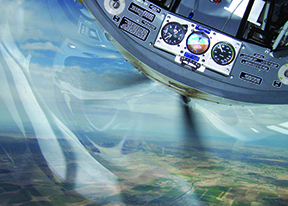The unpleasant concept of a thinking computer taking over when we’re the pilot in command has been wrestled in literature until it’s a cliché, but technology has reached the point where we may have to face it.

It’s been nearly five years since Garmin introduced the “wings level” button as part of the Perspective package on the Cirrus. It was trickle down from the military where one-push-equals-level-flight had already saved some very macho Top Gun-type fighter pilots. We don’t know how many saves that button should be credited with in the GA world, because there isn’t data on accidents that don’t happen.
Nevertheless, for years airplanes with sophisticated autopilots have broken up in flight or augered into terrain when pilots lost control and kept trying to sort things out for themselves rather than let the autopilot fix the mess. We don’t know if Perspective pilots are any more willing to surrender control to the automation should things go south in the clag than pilots before them, but we suspect that until unusual attitude recovery training includes, “use the automation,” there are going to continue to be pieces of raining airplanes that include unpushed “wings level” buttons.
Because autopilots available for even the most modest GA airplanes have the capability to do everything to fly a programmed trip except operate the throttle, why do we continue to have VFR into IMC as one of the top causes of death in little airplanes? At the other end of the spectrum, runway loss of control accidents are the top cause of expensive, but usually low-injury, accidents each year. Cars have automation that will steer them out of a skid—why don’t airplanes have automation that keeps them on the runway when the pilot can’t seem to shove the controls in the correct direction during rollout in a gusty crosswind?
We may find out. The NTSB is putting increasing pressure on the FAA to get the persistently lousy GA accident rate down. Insurers are tired of paying to defend cases when manufacturers are sued after a pilot loses control of an airplane, unsuccessfully tries to scud run or gets a buzz job wrong.
The technology exists to create a virtual co-pilot who has the CRM talk with the pilot in command, starting out with “This isn’t a good idea,” progressing through, “Hey! This is stupid!” all the way to taking control. We’re seeing some products that are starting down the road to doing just that.
While my opinion is that one of the big underlying reasons that flying is just plain fun is that I am in control, I wonder if the stats regarding GA pilots’ ability to successfully remain in control are going to drive automation that catches pilots if they fall off the tightrope and put innocents at risk.
The idea has a certain level of discomfort, yet I would not be surprised to see it trickle into GA. Right now, insurers require most owners of high-performance airplanes to take some sort of annual recurrent training if they want insurance. Once active flight management automation is developed to a certain level at some threshold cost, it’s possible that manufacturers are going to make it standard equipment and we’ll have to retrofit it if we want insurance coverage.
The floor is open to discussion. And, as the products emerge, you can bet we’ll be evaluating them.
—Rick Durden


